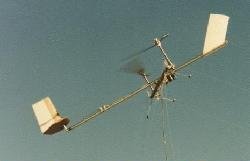
Flying electric generators, sometimes called tethered rotorcraft, use wind power to keep themselves airborne and at the same time to generate electricity. Operating at altitudes above 15,000 feet, the northern and southern hemisphere jetstreams provide the ideal strong reliable wind conditions for rotorcraft.
High altitude Rotorcraft solve the visual and noise problems inherent in terrestrial wind turbine farms. High altitude rotorcraft are also less likely to strike birds and bats.
During lightening storms, rotorcraft are winched back down to earth, causing a disruption in power generation. To avoid wind turbulence, rotorcraft can be moved to a different altitude much like an airliner that selects an altitude to achieve the smoothest possible ride.
Research is required to design, develop, and test the best tether. Tethers are many miles in length, must be lightweight so that they can be supported by the rotorcraft, and must be capable of transmitting high voltage electrical current down to earth.
Rotorcraft will be primarily deployed in existing no-fly zones, outside of aircraft flight paths, and away from population centers.
Sky Wind Power in San Diego is actively developing a 240kW rotorcraft and new tether technology. Current focus is on a four rotor design where each rotor has 2 blades. The best available tether technology uses insulated aluminum conductors in a vectran carbon composite shield. A series of test flights is planned to determine the optimum altitude and proximity to the jet stream.


